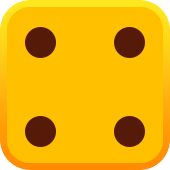












Texas Hold’em looks simple—two cards, five shared cards, best hand wins—yet beneath that surface lives a razor-sharp contest of math, psychology, and timing. This guide strips the game to its working parts: concrete rules, crisp examples, and practical lines you can use today. Whether you play at home, in a cardroom, or on your phone, you’ll learn how edges are made, preserved, and paid off. Expect tables to use, drills, and a path from pre-flop plans to river value so you play with precision..!
Texas Hold’em is a community card poker game where each player receives two private cards and aims to build the best five-card hand using any combination of personal and shared cards. It is simple to learn yet deep in play, ideal for cash games and tournaments. If you’re starting on a budget, you can try free poker Texas Holdem online to practice mechanics before risking money. Decisions hinge on position, stack depth and opponent tendencies.
The modern game coalesced in Robstown, Texas, in the early 1900s before reaching Las Vegas casinos by the 1960s. Its breakout came with the World Series of Poker and the 2003 “Moneymaker Effect,” when an amateur champion inspired a global boom. Hole-card cameras and online sites spread rules and strategy to new audiences. Today, poker Holdem Texas is offered in cardrooms worldwide and remains a staple of major tournament series.
Hold’em blends easy rules with rich decision trees, letting beginners act quickly while giving experts a wide edge. It rewards observation and precise value betting. You can find live poker Texas Holdem nearly anywhere games run, from local rooms to international stops, which keeps ecosystems active. Among each popular poker variant, it leads because ranges interact intuitively and the pace keeps recreational and pro players engaged.
The standard rules for Texas Holdem poker cover seating order, blinds, dealing, four betting rounds, and showdown. Tables seat 2–10 players and use a single 52-card deck. Games run in limit, pot-limit, or the widely preferred no-limit format, each defining bet sizes and risk profiles. Home games should keep chips, a button, and shuffling consistent; organized rooms post buy-ins and written procedures. Hence Holdem Texas remains the default offering.
The button marks the dealer and moves one seat clockwise each hand to keep action fair. Left of the button post small and big blinds to seed the pot; these forced bets drive action and ensure incentive to play. In tournaments, blinds escalate on a clock; in cash, blinds are fixed and stacks are measured in big blinds. Poker Holdem Texas appears in casino cash games with common stakes like 1/3, 2/5, and 5/10, while tournaments list buy-in and starting stack sizes.
|
Format |
Common Stakes |
Typical Buy-In |
Notes |
|
Cash |
$1/$3 |
$100–$300 |
33–100 BB |
|
Cash |
$2/$5 |
$200–$1,000 |
40–200 BB |
|
Tournament |
$150 |
$150 |
Rising |
|
Tournament |
$1,100 |
$1,100 |
Deeper |
Each player receives two hole cards face-down; five community cards are dealt in three stages. Any five-card combo may use zero, one, or two hole cards, producing holdings like straights or flushes. Dealers burn a card before each reveal to protect integrity of the pack. For home events, Texas Holdem poker sets with durable chips and a cut card help maintain consistent pacing and prevent exposed cards.
There are four rounds: pre-flop, flop, turn, and river, with action clockwise from the player left of the big blind or button. Across these streets you can check, bet, call, raise, or fold within table stakes. To communicate flow clearly, many guides summarize the sequence as flop, turn, river and show how ranges narrow after each street. Antes may be used to increase pot size, especially in late-stage tournaments.
|
Street |
Cards |
First |
Typical Size |
|
Pre-flop |
0 |
UTG / SB |
2–3 BB |
|
Flop |
3 |
Left of BTN |
33–66% |
|
Turn |
1 |
Left of BTN |
50–75% |
|
River |
1 |
Left of BTN |
50–100%+ |
Showdown occurs after the river if two or more players remain. The dealer reads hands by ranking category first and then by kickers when needed. Table cards in order and verify your hand before you show. Knowing best hands in poker Texas Holdem saves chips and avoids close disputes.
Only the best five cards count; extra cards beyond five are ignored when comparing. A flush with A-Q-9-7-3 beats a flush with A-Q-9-6-5 because the fourth card (7 vs 6) decides. You may play the board if it yields your strongest five, for example when all make the same straight or flush. Memorize categories and evaluate kickers before acting.
|
Rank |
Category |
Example |
Beats |
|
10 |
Royal Flush |
A♠K♠Q♠J♠T♠ |
All lower |
|
9 |
Straight Flush |
9♥8♥7♥6♥5♥ |
Quads |
|
8 |
Four of a Kind |
Q♦Q♠Q♥Q♣K♦ |
Full House |
|
7 |
Full House |
T♣T♦T♥K♠K♥ |
Flush |
|
6 |
Flush |
A♦Q♦9♦7♦3♦ |
Straight |
|
5 |
Straight |
A♣K♦Q♠J♥T♣ |
Trips |
|
4 |
Three of a Kind |
8♠8♦8♥K♣Q♦ |
Two Pair |
|
3 |
Two Pair |
J♣J♦7♠7♥A♣ |
One Pair |
|
2 |
One Pair |
A♠A♦K♣Q♣T♥ |
High Card |
|
1 |
High Card |
A-high |
None |
Ties are decided by the highest five-card set; if those five match exactly, the pot is split evenly. When stacks are odd, one chip may be awarded by house rule to the first seat left of the button. Kickers only matter when they appear inside your final five; a board-paired two-pair may render kickers irrelevant. Always read the board and your actual five to prevent mistakes.
Start with a tight-aggressive baseline and expand only when you’re comfortable post-flop. Learn pot odds and the stack-to-pot ratio so your bet sizes match the plan for the hand. Play fewer hands out of position and attack more when you act last; this single tweak lifts win rate quickly. Track opponents, label tendencies, and apply disciplined bankroll rules—these are the most durable tips you can use from day one. Build a simple review routine after each session so your poker Texas Holdem strategy compounds. Before you play, make sure to read the terms on the bonus page so you know the wagering requirements.
Open strong, fold the junk, and avoid dominated offsuit hands from early seats. Use pairs, suited Broadways, and suited connectors in later positions where you’ll realize equity. Versus raises, 3-bet your best hands and mix a few suited bluffs; flat-call only when position and implied odds are favorable. Keep your open sizes consistent to disguise strength, and tighten from the blinds because you will act first Texas Holdem poker tips post-flop.
|
Position |
Premium Opens |
Solid Opens |
Speculative Adds |
Folds (Most Games) |
|
Early (UTG/UTG+1) |
AA–TT, AKs/AKo |
AQs–ATs, KQs |
98s–76s |
Offsuit Ax<ATo, KJo– |
|
Middle |
AA–99, AK–AQ |
AJs–ATs, KQs–KJs, QJs |
65s–54s, small pairs |
Weak offsuit Broadways |
|
Cutoff |
Any pair, AK–AQ |
Axs, KTs+, QTs+, JTs |
T9s–54s, suited gappers |
Trash offsuit hands |
|
Button |
Any pair, AK–AT |
Axs, K9s+, Q9s+, J9s+ |
Any suited connector |
Very weak offsuit |
|
Blinds |
TT–66, AK–AQ |
AJs–ATs, KQs |
98s–65s (careful) |
Most offsuit trash |
|
Effective BB |
Default Open Size |
Notes |
3-Bet Value (vs LP) |
3-Bet Bluffs |
|
--- |
--- |
--- |
--- |
--- |
|
40–60 |
2.2–2.5 BB |
Standard for cash |
QQ+, AK |
A5s–A4s, KJs |
|
20–40 |
2.0–2.3 BB |
Control pot |
QQ–TT, AK–AQ |
A5s, KQs |
|
10–20 |
2.0 BB |
Short-stacked |
JJ+, AK |
A5s, KQs (select) |
|
≤10 |
Jam or fold |
ICM aware |
99+, AQ+ (spot-dep.) |
Rarely bluff |
Position decides who acts last, and acting last grants information, pot control, and extra profit. Play more hands on the Button and Cutoff; play fewer up front and from the Small Blind where you’re at a structural disadvantage. When out of position, choose bigger value bets and lean on check-raises with hands that can continue; when in position, keep ranges wider and pressure capped lines. Tie every pre-flop choice to a post-flop plan so your story remains coherent throughout the hand; this is the heartbeat of winning poker Holdem Texas.
|
Seat |
Strength Needed Pre-Flop |
Typical Plan |
Common Mistake |
|
Button |
Lowest |
Steal, isolate, control pot |
Checking back too often |
|
Cutoff |
Low-Medium |
Open wide, attack blinds |
Overcalling vs 3-bets |
|
Hijack |
Medium |
Solid opens, fewer bluffs |
Playing weak offsuit hands |
|
Early |
Highest |
Tight range, clear value |
Calling raises out of position |
|
Small Blind |
High |
3-bet or fold bias |
Completing too many trash hands |
|
Big Blind |
Medium-High |
Defend with odds, play fit-fold vs multiway |
Overdefending weak offsuit |




